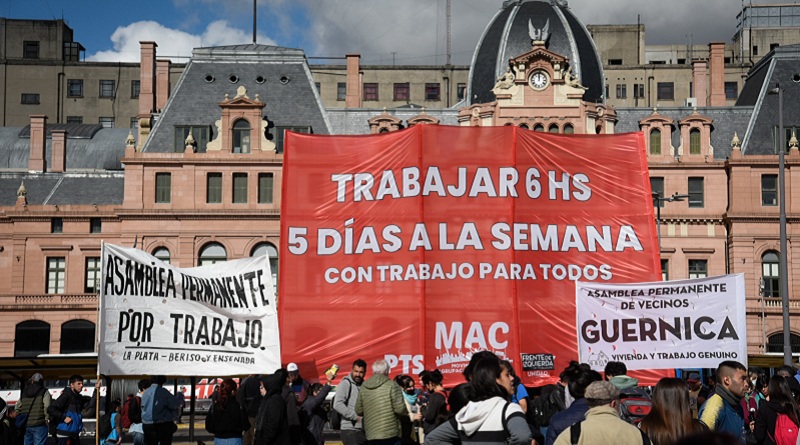
Labor informality for the second quarter of 2025 reaches its maximum in 17 years matching the precarization rate of 2008. In Argentina, 4 out of 10 employed workers (43.2%) are not covered by labor, tax or social security legislation.
“Beyond the fluctuations (and excluding the period of the pandemic), the salaried informality rate has remained in very high values for 17 years,” estimated a study by the Interdisciplinary Institute of Political Economy (IIEP) of the UBA, based on INDEC EPH data.
In addition, the study states that “black” workers receive on average 44% less income than registered. That is, “if a formal worker obtains a monthly income of $ 100,000, an informal one with the same educational level, equal age, equal sex, in the same region, working in the same branch of activity, same occupational category and in a company of equal size will obtain a monthly remuneration of $ 56 thousand,” exemplifies the IIEP.
As for age disaggregated, youth has the highest precarization rate with 63% between 16 and 24 years, almost 21 percentage points higher than the global rate. Also in those over 65, most are “in black.” Despite being retirement, 51% of workers are in informality.
Therefore, the greatest incidence of informality is given both at the beginning of working life and in its final stage.

The most precarious activity branches are headed by domestic (highly feminized) and construction, both with 75.4%. According to IIEP calculations, if the work in domestic service, the informality rate of the total of the total of the
Women would be reduced from 43.2% to 38%.
Because of its magnitude in employment (22.4%), it is trade that accounts for the greatest proportion of total informal employment. This is also due to the fact that it exhibits an incidence greater than the average (51.6%).

On the other hand, according to strain data based on the Superintendence of Work Risk, since Milei assumed to May this year, there are 223,537 thousand registered workers less.
When analyzing the loss of employment registered according to the size of the companies, the CEPA report indicates that “it is observed that the greatest expulsion of workers concentrated on large signatures (more than 500 workers): 74% of the total drop in registered employment (equivalent to 165,625 positions) occurred in companies with more than 500 workers.”

Another report from the Institute of Public Thought and Policies (IPyPP), based on the balance sheets of the 31 large companies that are quoted in the Buenos Aires Stock Exchange, estimated that their profits grew by 300% average during the past year, based, not greater sales or activity, but to financial mechanisms and “rearrangement of prices relative in favor of capital”.
In this way, the country’s main entrepreneurs saw their fortune increase significantly. Taking the 50 largest assets in the country that measures Forbes magazine, from 2020 to 2024, they saw their capital grow by 31.5 billion dollars (68%).

Reduction of the workday and distribution of work hours without affecting salary
A study by Economists from the Left Front shows that a reduction of the working day at 6 hours, 5 days of the week, with the distribution of work hours applied to the 12,000 largest companies in Argentina (2% of the total) would allow to create about 1 million jobs.
Attacking the gain of these large companies that highlight prices and fleeing their profits, genuine work could be generated to face unemployment and precariousness growth. The union centrals have been accomplices letting the adjustment and reforms pass. A true struggle plan is necessary to throw down the Milei and the IMF economic plan and advance in imposing measures in favor of the great majorities.
Source: www.laizquierdadiario.com

